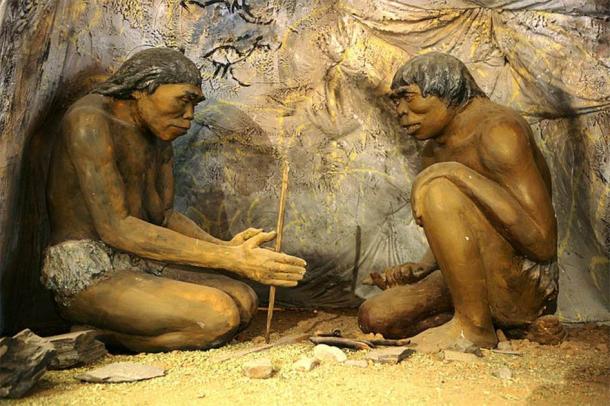Fire, and learning how to control it, greatly altered the course of human evolution allowing our ancestors to cook food, fight off predators and explore colder climates. Defining when humans first learned how to control fire has always been a point of great debate in archaeological circles.
Speaking with Live Science , Professor Ian Tattersall, a paleoanthropologist and curator emeritus of human origins at the American Museum of Natural History in New York City, said ancient evidence for fire doesn’t preserve very well and that trying to figure out when we started to harness it is “guesswork.” Notwithstanding, he now has reason to suspect fire-starting skills existed as early as 1.6 million years ago.
The oldest archaeological evidence of humans setting fires was discovered at the Qesem Cave in Israel dating to 300,000 to 400,000-years-ago, but an international team of archaeologists excavating in Wonderwerk Cave in South Africa in 2012 unearthed what they call “traces of campfires” that had been lit around 1 million years ago. And now, this date is being pushed back another 600,000 years.

Archaeologists have long debated when humans first started to make fire. The evidence to piece together the answer is being found in caves around the world. ( Public domain )
Questing the Ancient Origins of Increased Energy Supplies
Wonderwerk Cave in South Africa is an archaeological site in the dolomite rocks of the Kuruman Hills, situated between Danielskuil and Kuruman in the Northern Cape Province, South Africa. The cave has provided scientists with remnants of burned bone, plants and what appear to be hearths from 1 million years ago. Dr. Sarah Hlubik, a paleoanthropologist and postdoctoral researcher at George Washington University in Washington, D.C., says the new evidence of ancient fire is coming from “really far back into the cave,” indicating that it wasn’t caused by an out of control natural fire engulfing the surrounding landscape. This suggests to the researcher that these fires were set and burned deliberately by early humans.
Tattersall told Live Science that he suspects the early human use of fire goes much further back into time. Around 2 million years ago, the gut of Homo erectus , the human ancestor, began shrinking. This suggests that cooking may have made digestion much easier. What’s more, at this time the brain expanded in volume, requiring a higher consumption of calories and carbohydrates. These insights have led the scientist to ask where this energy could have come from without using fire to cook food ?
Applying the Sagan Standard
The Sagan Standard was formulated by Carl Edward Sagan , the American astronomer, planetary scientist, cosmologist, astrophysicist, astrobiologist, author, and science communicator, after he said “extraordinary claims require extraordinary evidence.” Knowing this all too well, doctors Tattersall and Hlubik must now find the much required evidence to back up their “extraordinary” argument. This is why Hlubik is currently looking for signs of ancient controlled fires at sites in Koobi Fora , a region in northern Kenya with archaeology dating back about 1.6 million years.
The scientist’s research at this site has so far looked at clusters of burned bones and artifacts. They have already observed that charred and burned sediment “was clustered separately,” which suggests living areas were delineated for specific tasks. This would mean that the place for maintaining the fire and cooking would have been separated from where the ancient human ancestors slept. This is enough to convince the scientists that they have found what they were looking for. As Hlubik told Live Science , she is “confident” fire was being used by people on this particular site. So much so, that the next phase of the research is to inspect other sites in the region for evidence of controlled fire use.
While it would be revolutionary in archaeological circles to prove that groups of early humans set fires 1.6 million-years-ago, the skeptics and Sagan fans among you will no doubt be thinking that this conclusion is much too premature until further evidence is secured. Perhaps a burning leaf floated into the cave and rested at the back where the so-called “ campfire” was discovered. However, in this instance, with the stakes being so high, skepticism should be no barrier to the quest at hand. The potential implications of finding evidence that humans controlled flames 1.6 million years ago would practically set mainstream history on fire.
Top image: The question of when humans discovered how to make fire is an issue of hot debate in archaeology. The most recent answer may have been found at Wonderwerk Cave in South Africa. Source: Gorodenkoff / Adobe Stock
By Ashley Cowie
 RSS Feed
RSS Feed















 August 24th, 2020
August 24th, 2020  Awake Goy
Awake Goy  Posted in
Posted in  Tags:
Tags: 













